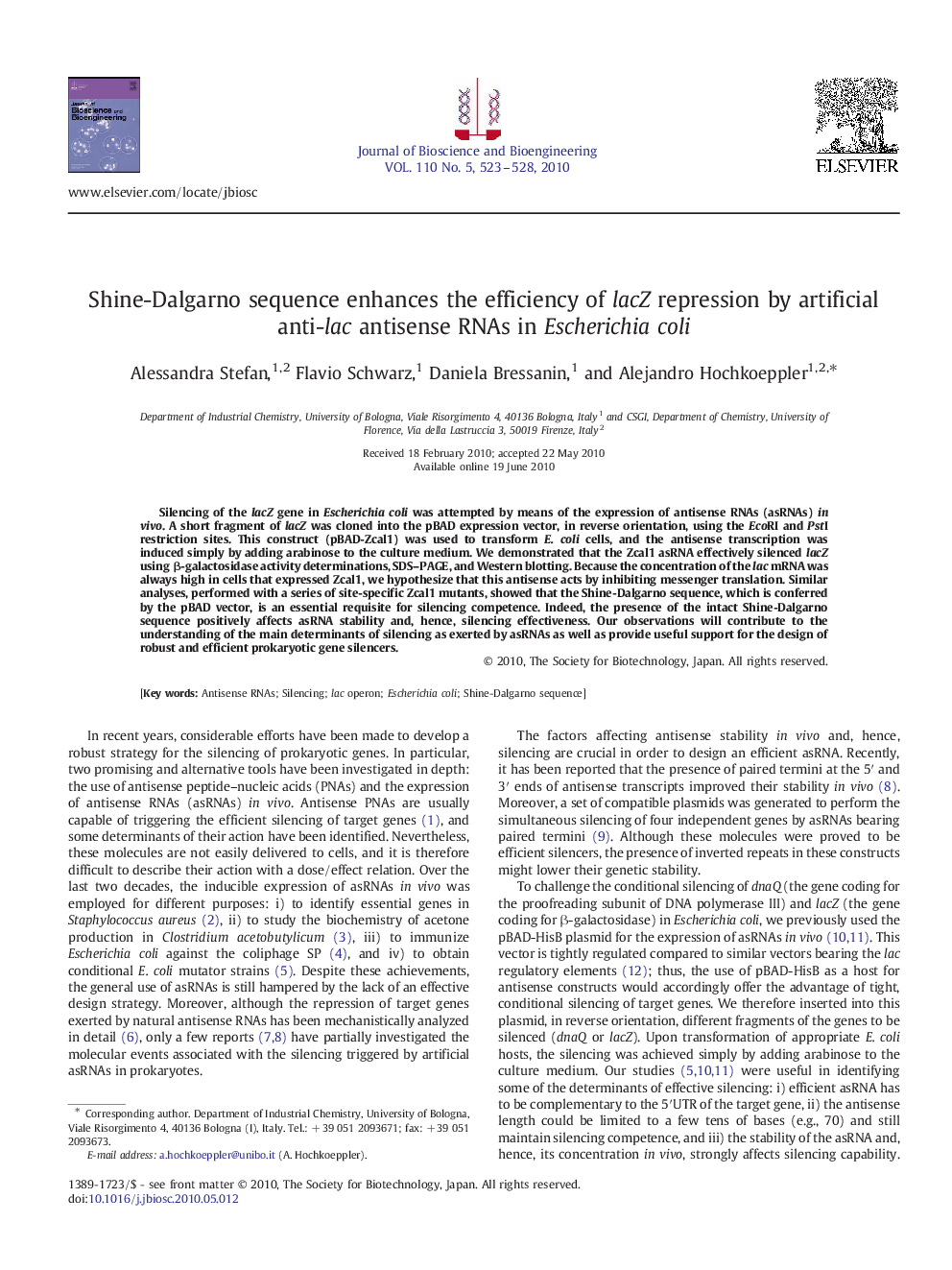| Article ID | Journal | Published Year | Pages | File Type |
|---|---|---|---|---|
| 21553 | Journal of Bioscience and Bioengineering | 2010 | 6 Pages |
Silencing of the lacZ gene in Escherichia coli was attempted by means of the expression of antisense RNAs (asRNAs) in vivo. A short fragment of lacZ was cloned into the pBAD expression vector, in reverse orientation, using the EcoRI and PstI restriction sites. This construct (pBAD-Zcal1) was used to transform E. coli cells, and the antisense transcription was induced simply by adding arabinose to the culture medium. We demonstrated that the Zcal1 asRNA effectively silenced lacZ using β-galactosidase activity determinations, SDS–PAGE, and Western blotting. Because the concentration of the lac mRNA was always high in cells that expressed Zcal1, we hypothesize that this antisense acts by inhibiting messenger translation. Similar analyses, performed with a series of site-specific Zcal1 mutants, showed that the Shine-Dalgarno sequence, which is conferred by the pBAD vector, is an essential requisite for silencing competence. Indeed, the presence of the intact Shine-Dalgarno sequence positively affects asRNA stability and, hence, silencing effectiveness. Our observations will contribute to the understanding of the main determinants of silencing as exerted by asRNAs as well as provide useful support for the design of robust and efficient prokaryotic gene silencers.
